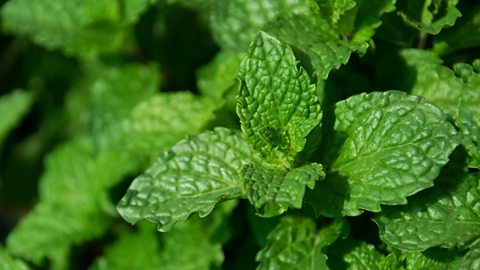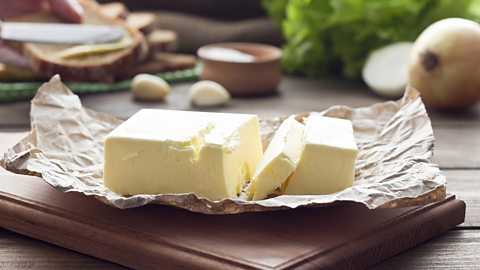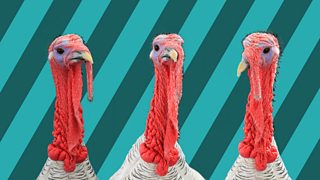Seven weird things you鈥檙e eating without realising (and why)
Unless you exclusively eat fruit and veg grown in your own garden, you’ll likely have ingested some pretty odd stuff following a trip to the supermarket. Here are seven of the strangest things you might have eaten, and a bit of the science behind them from …

1. Toothpaste
You might be forgiven for thinking that the minty flavour in your toothpaste comes from mint plants. But it’s more likely to have been made in a factory from turpentine, the stuff used to clean paint brushes. Don’t worry, the menthol molecules produced in this way are chemically identical to the ones extracted from mint plants, and the process can have a lower environmental impact than the intensive farming method that real mint requires.

The unexpected ingredient in toothpaste
The Domestic Science team reveal how the mint flavour in your toothpaste is created...
2. Chewing gum
Chewing gum used to be made from tree sap - a natural form of rubber. But these days most manufacturers offer only synthetic rubber for all your masticating needs. And that’s made from petroleum. In other words, your chewing gum is extracted from beneath the earth’s surface and partly made of old dead dinosaurs.
3. Bread
If you’re the sort of person who gets their bread from an artisanal small batch independent bakery, you can skip this one. But if you’ve ever eaten mass-produced bread, you can be pretty sure it contained L-Cysteine. This molecule makes dough easier to handle on a massive production line. Traditionally L-Cysteine is extracted from duck feathers, hog hair, cow horns, sheep hooves and even human hair. Although there are now vegan versions, made from fermented plant matter, it’s likely you’ve had more than one loaf containing a dough relaxer that started life on a barbershop floor.
4. Vanilla ice cream
It’s rare to find it today but the vanilla flavour in ice cream was once enhanced with Castoreum, a substance that adds notes of musk and Russian leather to make fake vanilla taste more convincing. You’ll be pleased to know it’s mainly confined to the perfume industry now as the source of Castoreum is the beaver's castor sacs, located near the anus.
5. Low fat frozen yoghurt
The arctic-dwelling ocean pout fish produces a protein that stops its blood freezing when temperatures drop below zero. This “antifreeze glycoprotein” has been extracted, copied and added to low-fat frozen desserts like ice-cream and frozen yoghurt. It stops water molecules from freezing too fast, which means smaller ice crystals are formed in the mixture as it solidifies. That’s how to create a creamy taste without using real cream - use fish antifreeze instead.

How to churn your own butter
The Domestic Science team explain the science behind churning your own butter.
6. Pimento olives
You know those fancy green olives stuffed with a little strip of sweet red pepper? Traditionally, pimento peppers are cut into strips and hand-stuffed into the olives. But that’s labour-intensive, so to automate the process, manufacturers instead create a giant sheet of pimento-flavoured jelly they can slice into uniform strips. Pimento olives are your new jam. Literally.
7. Made in the USA
Avoiding all processed foods still won’t stop you getting more than you bargained for, as even the most natural products in your shopping basket may have the odd unwelcome addition. The US Food and Drug Administration allows for five rodent hairs in every 18oz jar of peanut butter, while frozen berries can contain up to four larvae or 10 whole insects per 500g. We recommend you don’t look too hard and just think about all that lovely extra protein you’re getting.
-
![]()
A heady combination of maths, science and comedy with Festival of the Spoken Nerd.
More Funny in Four
-
![]()
From eternal octopuses to the unbelievable flying altitude of bees!
-
![]()
Author Pete Brown also explains why beers are sometimes served with lime.
-
![]()
Benjamin Partridge is worried that children are turning their backs on beef.
-
![]()
Prue explains all to Romesh Ranganathan, Phill Jupitus and John Lloyd.





